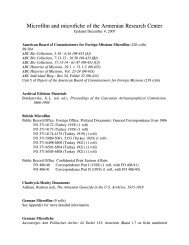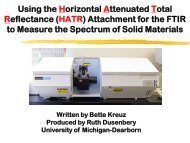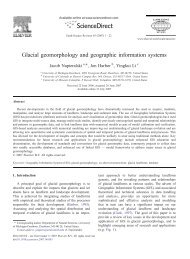Introduction to On Board Diagnostics (II)
Introduction to On Board Diagnostics (II)
Introduction to On Board Diagnostics (II)
Create successful ePaper yourself
Turn your PDF publications into a flip-book with our unique Google optimized e-Paper software.
OBD(<strong>II</strong>)In addition the electrical characteristics of the pintle valve are checked, including the voltage, the current drawn bythe moving pintle, , and the circuit continuity including open circuit as well as short scircuit in the wiring. There aretwo methods used in verifying that EGR is functioning properly meaning mno sticking valve or clogged EGR passage.The first method is <strong>to</strong> intentionally open the EGR valve through a measured value during normal operation whenthere is no need for EGR and measure the response of critical system sparameters due <strong>to</strong> this perturbation namely,Engine RPM, coolant temperature, MAP pressure, pintle valve position, and closed-loop loop fuel system correction. Ifthe critical parameters do not conform <strong>to</strong> the desired values EGR malfunction is indicated. The second method is <strong>to</strong>wait for the condition of the vehicle when the EGR is operated by the PCM as a consequence of engine overrun orhigh load. Then intentionally disable EGR operation for a small predefined amount of time and measure the criticalparameters. If the difference in critical parameter values do not t conform <strong>to</strong> the expected values then EGRmalfunction is indicated.A much simpler algorithm measures the increase in coolant temperature during EGR and if the increase in notwithin desired range EGR malfunction is indicated. In addition increase iin manifold absolute pressure (MAP)during EGR and if the increase is not within desired range EGR malfunction mis indicated.Due <strong>to</strong> uncertainties encountered in EGR moni<strong>to</strong>ring, more than one e diagnostic is necessary before a fault code iss<strong>to</strong>red and the MIL is illuminated. <strong>On</strong>e method is <strong>to</strong> requires three successive tests, each revealing an EGR fault,before a fault code is s<strong>to</strong>red. If a test reveals no fault , the next test is performed eleven minutes later. The predefinedoperating condition is deceleration which means that the test is performed during deceleration of the vehicle.Different frequencies of testing are also used in the diagnostic. . Another method requires eight tests <strong>to</strong> be performedwithin a two minute period before a fault code is s<strong>to</strong>red when two o failures occur within that period. Currently aboutfifty percent of the manufacturers moni<strong>to</strong>r the EGR passage temperature, twenty-five percent moni<strong>to</strong>r the EGR valvesignal (position), and twenty-five percent use the intrusive perturbation method <strong>to</strong> detect EGR malfunction.The legal OBD <strong>II</strong> requirement is: The diagnostic system shall moni<strong>to</strong>r the EGR system on vehicle for low and highflow rate malfunction.The hardware failure code of P1406 is set for out of range voltage signal from the pintle valve position sensor ofmore than 10% from commanded value.Another manufacturer moni<strong>to</strong>rs the exhaust gas pressures on both sides of an orifice in the passage <strong>to</strong> the EGRvalve. The pressure drop across the orifice is measured as the exhaust egas flows through the orifice. If the pressuredifferential is not within permissible limits, EGR fault code is set.Different DTCs are set for tests performed with similar EGR diagnostic objectives due <strong>to</strong> differences in test time, andcritical parameter values.EGR diagnostics diagnostics are described in more detail in a later section.
















